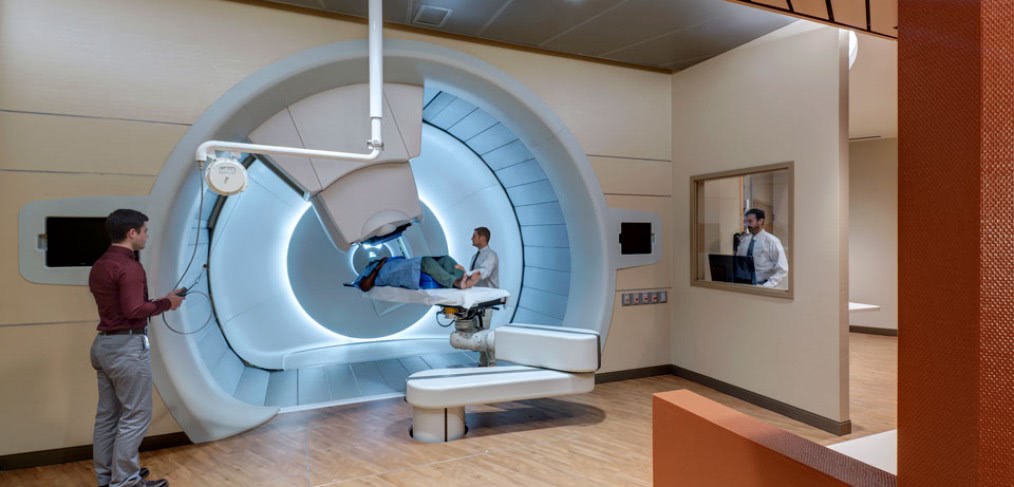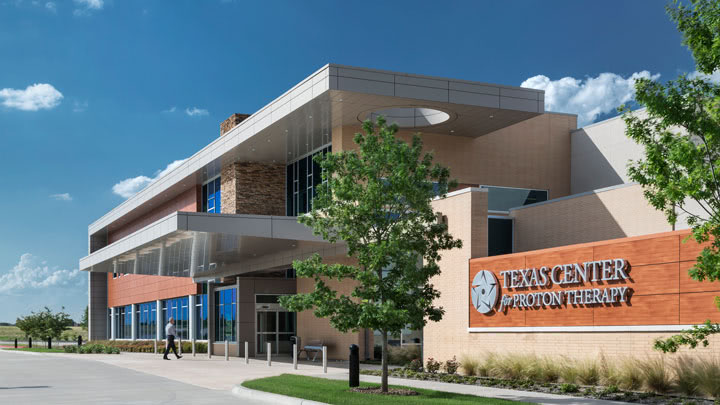
Designing for Wellness: The Texas Center for Proton Therapy
As architects, the best projects are the ones that allow us to combine our technical expertise, our love of design, and the opportunity to help our community. The Texas Center for Proton Therapy opened in Irving in October and fulfilled all of these conditions for me and my team and made the two-year design process a truly rewarding experience.
To detail our design process, I first need to take a step back and explain proton therapy. In a nutshell, proton therapy is precise radiation therapy that destroys cancer cells without extensive damage to the surrounding healthy tissue. Even better, side effects are usually minimal and less severe than traditional radiation, and treatment is painless and quick. Ultimately, this means greater control for physicians and staff, and shorter treatment times and fewer side effects for patients.
Despite some industry disagreement last year about the widespread use of proton therapy, it is among the most promising cancer treatment options available, particularly for brain and breast tumors, and certain childhood cancers. There are currently 16 facilities operating in the United States, but the treatment’s use is expanding as more research confirms its effectiveness.
The catch with this type of therapy is that the machinery is enormous, weighing 220 tons, so it generally cannot be housed within a traditional hospital setting. At the Texas Center for Proton Therapy, that’s where our design team came in. Proton therapy facilities pose some unique design challenges in that the layout, building materials and machinery require meticulous attention to detail and technical knowledge, but the interiors and touchpoints must focus on patients and an atmosphere of wellness.
We designed the Texas Center for Proton Therapy so that the calming, wellness-oriented environment belies the technical detail and extensive planning behind the design. It’s the third project of this type that we have designed, but these treatment centers require new, complex concepts, innovation and experience; each new facility needs a distinctive strategy that takes into account community preferences and patient needs.
In terms of technical specs, the 62,000-SF facility houses a proton cyclotron, two 360-degree isocentric-gantry treatment rooms, a fixed-beam treatment room and advanced image guidance technology, as well as MRI, PET-CT, CT simulation, and in contrast, a landscaped healing garden. Warm wood tones and natural light were incorporated into the interior design to give patients a spa-like environment. Clinical trials and therapeutic activities like yoga and nutrition programs were kept in mind during the design process, and we designed a “HOPE wall” in the large community room that features hand-written messages of support and encouragement. The facility also features a children’s room and learning center for kids receiving treatment.
The Texas Center for Proton Therapy provides services through Texas Oncology and will give patients in Texas and across the country advanced options in the fight against cancer, including the opportunity to participate in leading clinical trials through its relationship with US Oncology Research. There’s no question that we were able to utilize our technical knowledge on this project, but the biggest reward for us is seeing how our work can help in the healing process, even in some small way.


Thank you Allison!